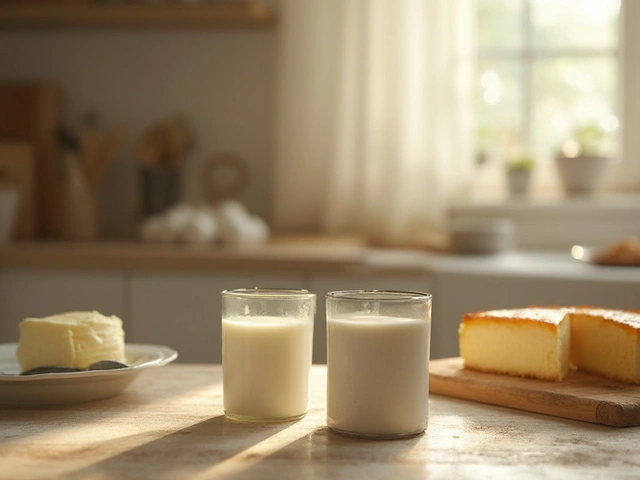Italian Cheese: Types, How to Use Them, and Sweet Ideas
If you love desserts that melt in your mouth, Italian cheese is a secret weapon. From creamy mascarpone in tiramisu to fluffy ricotta in cannoli, these cheeses add richness without the hassle. Below you’ll find the most common Italian cheeses, quick tips on storing them, and easy ways to fold them into your next sweet treat.
Popular Italian Cheeses for Desserts
Mascarpone – This soft, buttery cheese is the heart of tiramisu and many frosting recipes. It mixes smoothly with sugar, coffee, or fruit puree, so you can whip up a layer cake or a simple dip in minutes.
Ricotta – Light and slightly grainy, ricotta works great in pastries, cheesecakes, and even pancakes. Mix it with a bit of lemon zest and honey for a quick breakfast bowl, or fold it into chocolate cake batter for extra moisture.
Stracciatella – Think of it as a milky cousin of mozzarella. Its creamy strands make a dreamy topping for fruit tarts or a luxurious swirl in panna cotta.
Ricotta Salata – This firmer, salted version is perfect for sprinkling over sweet focaccia or caramelized figs. A pinch adds a salty‑sweet contrast that keeps people guessing.
When you pick a cheese, think about the texture you want. Creamy cheeses like mascarpone give a velvety finish, while grainier options like ricotta add body without heaviness.
Storing and Handling Tips
Cheese stays fresh longer if you treat it gently. Keep mascarpone and ricotta in their original containers, sealed tightly, and stored in the coldest part of the fridge (usually the back). If the package looks a bit dry, cover the surface with a thin layer of cream or milk before sealing.
For harder cheeses like Ricotta Salata, wrap them in parchment paper first, then a loose layer of foil. This lets the cheese breathe without drying out.
Always let cheese come to room temperature before mixing it into desserts. A cold batch can split when you whisk it with sugar or whipped cream. A quick 15‑minute sit on the counter does the trick.If you notice a thin layer of liquid on top of ricotta, just stir it back in – it’s whey, not spoilage.
Most Italian cheeses last about a week after opening. If you need more time, you can freeze mascarpone or ricotta in an airtight bag for up to two months. Thaw slowly in the fridge and give them a good stir before using.
Now that you know the basics, try swapping the usual cream cheese in a cheesecake recipe with equal parts mascarpone and ricotta. The result is lighter, richer, and surprisingly simple.
Or, blend ricotta with cocoa powder, a splash of espresso, and a dash of vanilla for a quick chocolate mousse that needs no eggs. Top with shaved dark chocolate and you’ve got a dessert that feels gourmet but takes under 20 minutes.
Got a batch of leftover cannoli shells? Fill them with a mix of ricotta, powdered sugar, orange zest, and a drizzle of honey. It’s a fresh spin on a classic that anyone will love.
Whether you’re prepping for a party or just satisfying a sweet craving, Italian cheese can turn ordinary desserts into something special. Grab a tub, follow these storage tricks, and start experimenting – your taste buds will thank you.

Discovering the True Italian Cheese: Names, Varieties, and Taste Secrets
Unravel the world of Italian cheese. Learn about famous cheese names, how they differ, and tasty tips for using them in your kitchen.
View More




